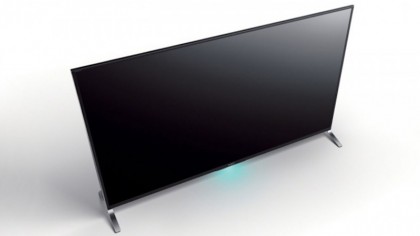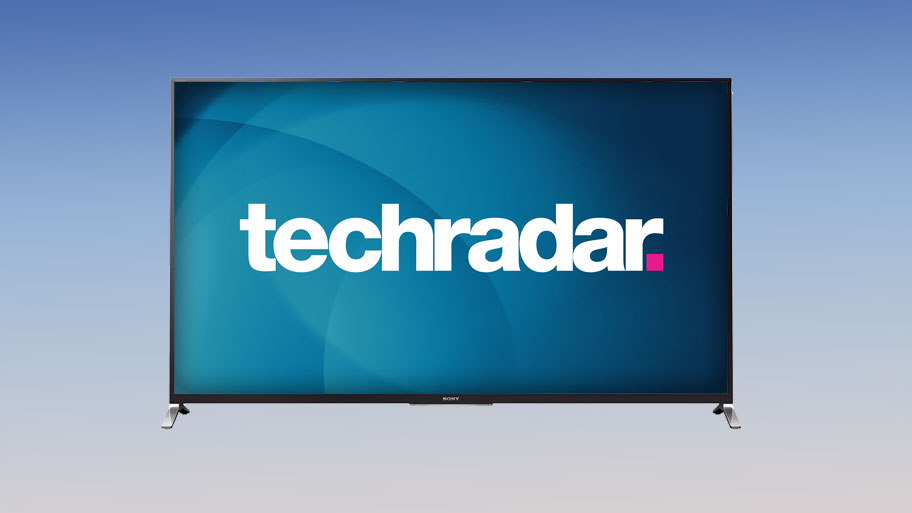Why you can trust TechRadar
I might as well just cut to the chase here and say that tragically the 55W955 is one of those rare events in the TV world: a flagship TV that's significantly less satisfying to watch than a model lower down Sony's range.
What's the problem? Dark scenes. It's apparent almost immediately that the panel Sony has chosen to build the 55W955 around is nowhere near as secure in the contrast department as the superb 50W829.
This fact makes itself known in a number of ways. The most troubling of which is a general grey mist that hangs over any dark scenes, reducing their naturalism and dynamism compared with how they appeared on the 50W829.
Black level problems
The greyness can also cause some greyscale detailing to slide into oblivion, and is unbearably bad if you attempt to watch the TV without using its LED Dynamic Control system. What's more, while the LED Dynamic Control can indeed deliver significant contrast improvements, even on its highest setting it can't produce a black level to rival that of the cheaper 50W829.
There's also the issue of uneven backlighting to consider, whereby dark scenes sometimes appear behind gentle, but still distracting, clouds of unintentional extra brightness.

There is one good bit of news to report here, though, namely that Sony's local dimming system continues to impress in the way it manipulates light on a reasonably local level without causing too many obvious 'rectangles' of light around stand-out bright objects.
But the bottom line here is that you can't make a silk purse out of a sow's ear. And the lack of black level response from the 55W955's core panel is just too big a problem for even Sony's local dimming cleverness to turn round.
More bad news
While there are actually some good things about the 55W955's pictures, there is still a lot of bad news.
The slightly low-res look to its 3D images, which manifests in the shape of a soft finish compared to the extreme, almost forensic clarity we're now becoming accustomed to seeing on the best active HD and UHD 3D sets, and a stepped look to contoured edges.
Also the 55W955's screen is rather prone to picking up reflections from your room – especially direct light sources opposite the screen.
It would be unthinkable for a modern-day Sony TV not to get lots of things right in a flagship HD TV, though. And so it is that the 55W955 produces frequently spectacular colours thanks to Sony's Triluminos colour technology.
Colour
Confusingly this is not the same Quantum Dot technology that delivered 2013's Triluminos expanded colour gamut. Instead it's some sort of wide colour gamut panel design (the details of which Sony was oddly unwilling to be drawn on).
But all that matters is that within the limitations of the black level response problems it delivers a scintillatingly wide dynamic range packed with subtle tonal details and potent saturations that at the very least rival those of the PurColour technology found in Samsung's HU8500 UHD TVs.
It's in this respect, too, that the 55W955 delivers its most persuasive picture advantage over its 50W829 sibling.
HD 2D pictures on the 55W955 looks superbly crisp and detailed, while X-Reality Pro proves its worth again when it comes to up-scaling standard definition sources to the screen's HD resolution. Even YouTube videos are made easy on the eye, and there can be no greater proof of X-Reality Pro's abilities than that!
Motion clarity
The 55W955's sharpness owes a debt of gratitude to Sony's strong motion handling abilities too, which tread a finely judged line between applying processing to reduce judder and blur without making the picture look unnatural and processed.
In short, where Sony's engineers haven't had to wrestle with the inescapable contrast flaws of the panel at the 55W955's heart, they've been able to work their usual perfectly pitched magic. But in the end this just makes the multiple black level woes all the tougher to take.
Current page: Picture quality
Prev Page Introduction and features Next Page Usability, sound and valueJohn has been writing about home entertainment technology for more than two decades - an especially impressive feat considering he still claims to only be 35 years old (yeah, right). In that time he’s reviewed hundreds if not thousands of TVs, projectors and speakers, and spent frankly far too long sitting by himself in a dark room.

